Animal People, Inc. was founded in 1992, with the mission of:
“Exposing the existence of cruelty to animals and educating the public of the need to prevent and eliminate such cruelty; conducting or sponsoring animal care projects, both to directly alleviate animal suffering and to demonstrate humane methods of handling and responding to animal-related dilemmas; and studying animal-related issues via research, surveys, and investigative reports.”
From its inception until 2013, Animal People’s central project was the publication Animal People News, a newspaper that reported current events related to animal protection around the world. In 2014 the newspaper was retired, and the Animal People Forum conceived as a new direction for the organization. The Forum would continue the organization’s longstanding mission while greatly expanding its scope, offering not just a source of information on animal rights issues, but a platform for activists and others who care about animals from around the world to share their own perspectives and network, dialogue, and debate with one another.
Animal People’s newly expanded vision would be symbolized in the creation of a new logo. During the newspaper’s 21-year run, three previous logos had been used, all of which depicted a young woman in the company of animals:
- October 1992-September 2003
- October 2003-January/February 2004
- March 2004-December 2013
Our newest logo follows tradition in this regard, also featuring a young woman together with an animal. However, compared to previous versions its visual style is much simpler and cleaner, and its symbolism more intricate.
The woman herself is of uncertain ancestry, signifying that animal rights is a universal cause, not specific to any one culture but incumbent on all people of every ethnic, racial, and spiritual background. Her expression is gentle yet steadfast, showing her resolve to defend those who depend on her no matter what it takes.
The animal she holds in her arms is a young pig, chosen because of all the animals harmed by humans, pigs are among the most victimized: exploited and killed for their flesh and hides, in scientific research, and in various bloodsports; maligned in everyday speech as dirty, lazy, stupid, gluttonous, and cruel; and stigmatized as unclean and polluting in many traditions.
The highlighted portions of the woman and pig’s contours together form a stylized version of the Chinese character 仁. Pronounced “Ren” in English, it is a homophone of 人, “human” or “person,” from which the written character is partly derived. Combining 人 and 二, the character for “two,” 仁 signifies in Confucian spiritual philosophy an aspect of human nature that emerges in relation to others.
Like most spiritual ideals, Ren defies easy characterization, and is defined a number of different ways in Confucian texts. All agree, however, that it involves feeling concern for others’ welfare, and is a crucial element of what it means to be human. Many also acknowledge compassion for animals as a key part of Ren.
According to Japanese Confucian Kaibara Ekken (1630-1714),
“Heaven and Earth are the heart of living things. Humans receive this heart and it becomes their own. This is Ren. … Nourishing life belongs to Heaven and Ren belongs to humans. … Even birds and animals, grasses and trees, are all made by nature – if we damage them recklessly, we should realize that it is a lack of filiality towards nature.”
Wang Yangming (1472-1529) writes of the ideal person, one who has mastered practice of Ren:
“Therefore when he sees a child about to fall into a well, he cannot help a feeling of alarm and commiseration. …when he observes the pitiful cries and frightened appearance of birds and animals about to be slaughtered, he cannot help feeling an ‘inability to bear’ their suffering.”
His words echo those of Mencius (372-289 BCE), the second great Confucian scholar after Confucius himself:
“This is the way of the noble person in regard to animals: if he sees them alive, then he cannot bear to see them die, and if he hears their cries, then he cannot bear to eat their flesh.”
It is because of humans’ innate capacity to feel compassion and concern for others, including animals, that Mencius argues human nature is inherently good. To activists confronted day after day by the appalling magnitude of human cruelty toward animals, such a claim may seem unthinkable. Yet there is an important nuance to Mencius’ assertion: in Confucian thought, the term “nature” entails not just a thing’s current state of being, but also its potential to grow into something else.
Just as it is the nature of a seed to transform into a tree, Mencius believed that it is the nature of humans to transform into compassionate beings motivated by Ren… but, just like a seed, only with proper nourishment:
“The trees on Ox Mountain were once beautiful. But being situated on the outskirts of a large state, the trees were hewn down by axes. Could they remain beautiful? … Seeing this barrenness, people suppose that the mountain was never wooded. But how could this be the nature of the mountain? So it is also with human beings… If one lets go of the innate good mind, this is like taking an axe to a tree; being hewn down day after day, can it remain beautiful? … Thus, given nourishment, there is nothing that will not grow; lacking nourishment, there is nothing that will not be destroyed.”
Animal People too believes that humans’ empathy and respect for other creatures can be nourished to grow. Through the Animal People Forum, we hope to empower those who “cannot bear the suffering of others,” so they may alleviate that suffering and, hopefully, inspire others to discover their own sense of compassion for all sentient creatures.
We believe there is no better word than 仁, as conceived by Kaibara Ekken, Wang Yangming, and Mencius, to summarize the vision of the Animal People Forum. Our new logo reminds us every day of our cause for existence, to nourish compassion and change the state of humans’ relationships with animals.
(Special thanks to Peter Li, historian and China policy adviser for Humane Society International, and Siyu Wang, friend and practicing Confucian, for providing feedback during the logo’s development process)

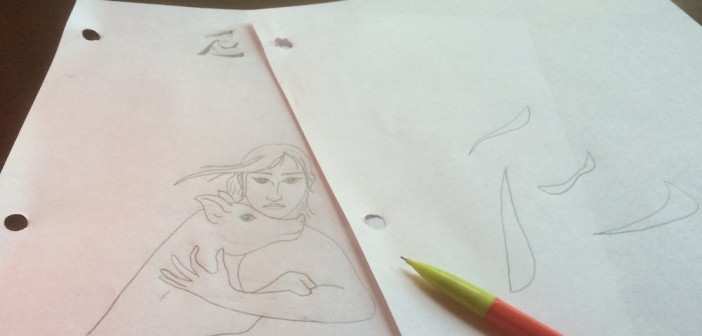
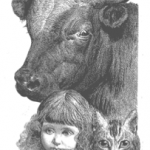
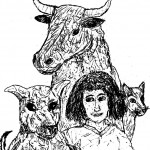
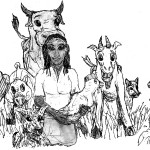
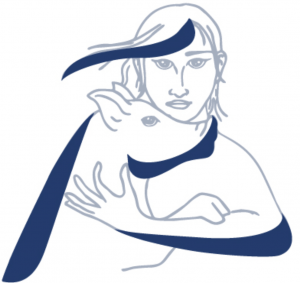




1 Comment
yes i like this comment